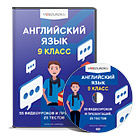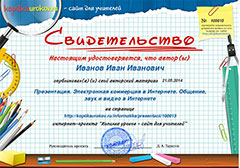Zhunusova Saule
Erkenovna
The date:
8 “A” - ____________
Subject: English
Grade: 8 “A”
Students number-13
The theme of the lesson:
“Feelings”
The resources of the lesson
Teacher’s book, student’s book, internet, CD-ROM
The aids of the lesson
Flipcharts, puzzles, Estimated sheets, CD-ROM, video of physical education, video of grammar material, test, stickers, colors pens.
The aim of the lesson
To use grammar material “Past Perfect”.
The objectives of the lesson
- Develop and improve the monological and dialogical speech.
- Develop the written language.
- Practice their skills and habits in writing and reading
· Practice their skills and habits in speaking and listening
- Use grammar material “Past Perfect”.
- Describe events and feelings in the past
- Talk about feelings
- Develop their logical thought and interest to study English
The type of the lesson
New lexical and grammar lesson
The methods of the lesson
Work in groups, work in pairs, individual work
Time
Teacher’s Role
Student’s Activity
The organization
Moment.
4 min.
Teacher has a dialogue with students
Greeting:Good morning!
Take your seats please.
How are you today?
I’m fine thank you!
I’m very glad to see you!
Calling the register:
Who is on duty today?
What date is it today?
Who is absent today? (Flipchart №1)
Teacher asks students come to teacher’s table and choose one piece of the puzzle, then find the other parts of the puzzle which have other students by this way they will collect three pictures and compound three groups.
(Application № 1)
Teacher puts the picture of the tiger to the first table, the picture of the lion to the second and the picture of the leopard to the third table so that each group has the name of the animals.
(Application № 2)
Teacher gives the “Estimatedsheets” and describes how to fill it.
(Application №3)
Students has dialogue with teacher.
Greeting:Good morning!
We are fine thank you and you?
We are very glad to see you too!
Calling the register:
I’m on duty today.
Today is the__________.
Today is_____________.
All are present. (dialogue between teacher and student.
Students come to teacher’s table and choose one piece of the puzzle, then find the other parts of the puzzle which have other students by this way they will collect three pictures and compound three groups.(work in class)
Students listen the explanation and fulfill estimatedsheets.
(individual work)
Checking home task.
2 min.
Teacher asks the home task.
-What was your home task? Let’s check it. (Flipchart № 2)
Teacher asks students to change their copybooks with their classmates and to compare the right answer on the white board with their answer. (Flipchart № 3)
Students answer.
-Our home task was exercises 1-3 at page 56 (Work book). (dialogue between teacher and student)
Students change their copybooks with their classmates and compare the right answer on the white board with their answer. (work in pairs) Estimate.
Following up activities.
20 min.
- Introduction. Brainstorm.
Teacher asks students to pay attention to the rebus and find out the proverb. (Flipchart № 4)
Answer: “Two heads are better than one” (Flipchart № 5)
Teacher asks students to translate the proverb then to write in their copybook.
Teacher reads the theme of the lesson “Feelings” then asks to open their student’s book at page 116-117 (Flipchart № 6)
Key vocabulary 1.
a) Plays the recording. Then set the time limit and asks students to work in pairs on the translations. Tells them to translate the ones they know first, then to guess the meanings of the others and to check in a dictionary if they have time.
Plays the recording again and asks students to repeat. Notes that disappointed is the only one where the -ed ending is pronounced as a separate syllable. Makes sure students pronounce the others as /d/ or /t/. Also gives attention to the stress in disappointed and embarrassed.
(Flipchart № 7), (Application № 4 CD-ROM)
b) Reads through the list of situations. Explains that more than one adjective is possible for each situation, and that different people will react differently - for example, some students may feel relaxed before an exam (2). or prefer to spend time alone at home (4) rather than go out.
Two situations for each group.
(Flipchart № 8)
Suggested answers:
1 pleased, surprised
2 nervous, worried, relaxed
3 relieved, pleased
4 fed up, lonely, relaxed
5 annoyed, disappointed, upset, fed up
6 annoyed, disappointed, embarrassed, upset
Presentation 2.
Teacher asks students to say what they can see in the photos. (Flipchart № 9)
Uses them to introduce the word tornado and practices the pronunciation. Revises storm and destroy.
Teacher divides the text into three parts and asks each group to translate their passage then go to another two groups and tell the translation of their passage, so do the other two groups.
Teacher asks students to make a cluster according their passage of the text then to present it in English.
Reads out the introduction to the text and asks the question.
Plays the recording. With books closed, students listen for the answer to the question. (Flipchart № 10), (Application № 4 CD-ROM)
Teacher asks students to change their copybooks with their classmates and to compare the right answer on the white board with their answer. (Flipchart № 11)
Students pay attention to the rebus and find out the proverb. (individual work)
Students translate the proverb then write the proverb in their copybook.
Students open the students book.
(individual work)
Students listen to the adjectives.
Work in pairs on the translations, guess the meanings of the others words and check in a dictionary.
Students listen to the adjectives and repeat.
Students read the situation and choose necessary adjective. (work in group)
Students say what they can see in the photos.
Students translate their passage then go to another two groups and tell the translation of their passage.(work in group)
Students make a cluster according their passage of the text then present it in English. (work in group)
Students listen for the answer to the question then answer in their copybooks. (individual work)
Students change their copybooks with their classmates and compare the right answer. ( work in pair)
Fastening of the studied material.
15 min.
Physical education. Teacher plays the video with physical exercises. (Application № 5 CD-ROM) (Flipchart № 12)
Key grammar 3.
Teacher plays the video grammar material. (Application № 6 )
Looks at the time line and the examples and asks students to answer the question. Makes it clear that we use the past perfect when we're already talking about the past. It refers to an event that happened further back in the past.
Mentions that words like ever, just, yet. already, for and since, which are often used with the present perfect, can also be used with the past perfect.
Explains that in conversation we use the contracted form of had with pronouns: I'd. he'd, they'd etc. Point out the difference between I'd + past participle (= I had) and I'd + infinitive (= I would). (Flipchart № 13)
Practice 4
Asks students to complete the sentences using the verbs in brackets. They could do this orally and/or in writing.
(Flipchart № 14)
Answers:
2 had gone
3 hadn't told
4 'd done
5 'd left
6 hadn't contacted
7 had seen
Teacher gives the test according grammar material of two variant and asks them to do it then change their copybooks with classmates and check right answers. (Flipchart № 15), (Application № 7)
Game.
Teacher explains how to play the long sentence game in a circle. The first pupil must make a sentence using the construction “I like to eat….”. The second student repeats his/her sentence and adds own and so on round the circle.
Students watch and do physical exercises.
Students listen. (individual work)
Answer the question.
Students complete the sentences using the verbs in brackets. (work in group)
e test then change their copybooks with classmates and check right answers.
Students play the long sentence game in a circle.
Round of activities
0.5 min
Giving home task:
-Your home task will be exercises 1-3 at page 62-63 in your Work book. (Flipchart № 16)
Students write their home task.
2 min
Teacher counts points. Picks all totals. Gives marks and comments. Then asks students to give their opinion according the lesson writing it on stickers. (Application № 8)
Count. Give their dairies. Give their opinion according the lesson writing it on stickers then hang them on the cluster.
0.5 min
Brief reference to the next lesson. Thank you for your good work at the lesson. I think everything were understandable for you. The theme of our next lesson will be “Must, can’t, might, could for speculation ”. Good bye. (Flipchart № 17)















